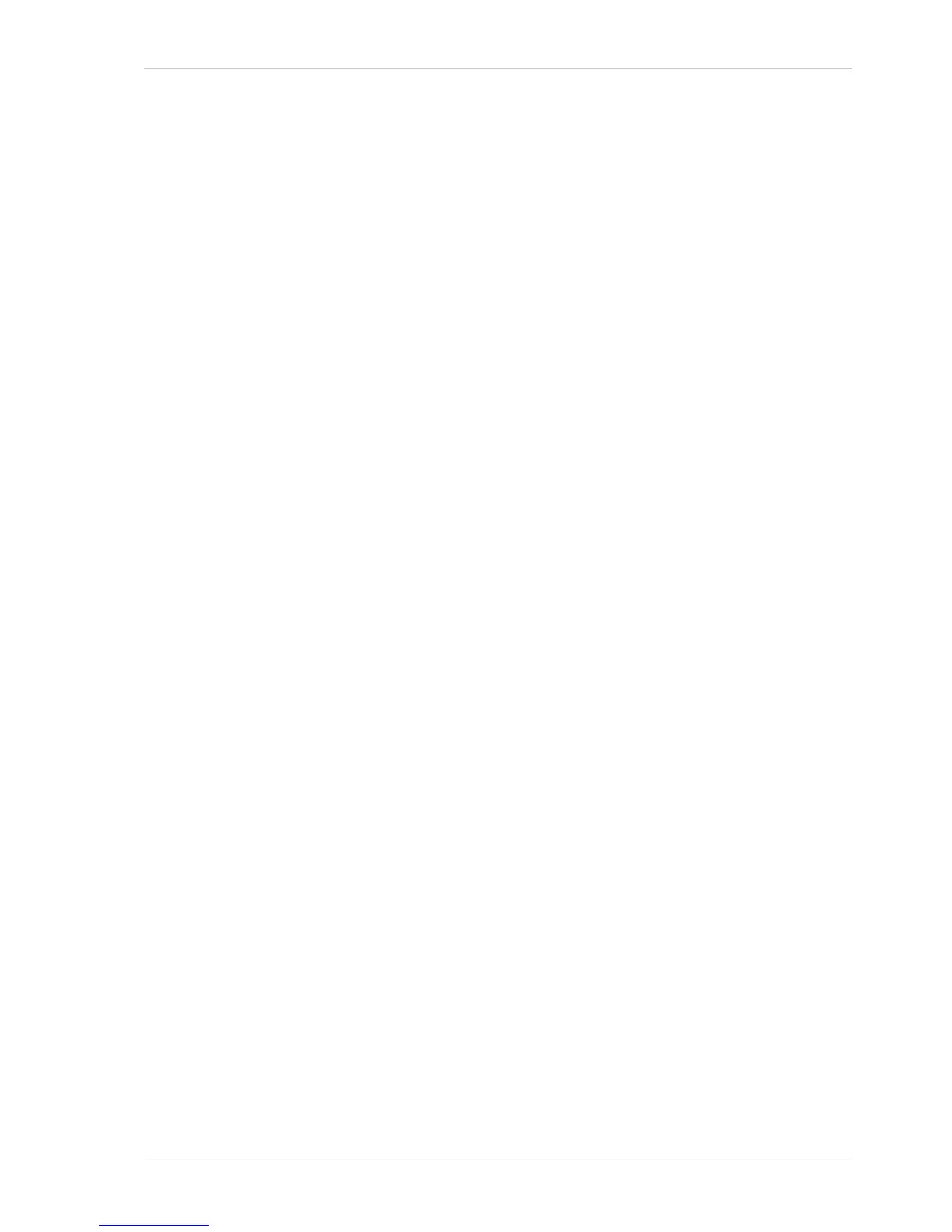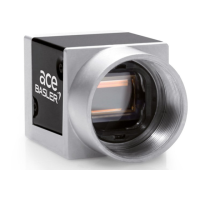AW00097603000 Color Creation and Enhancement
Basler aviator GigE 111
In the first step of the process, a demosaicing algorithm is performed to get RGB data for each pixel.
This is required because color cameras with a Bayer filter on the sensor gather only one color of
light for each individual pixel.
The second step of the process is to convert the RGB information to the YUV color model. The
conversion algorithm uses the following formulas:
Y = 0.30 R + 0.59 G + 0.11 B
U = - 0.17 R - 0.33 G + 0.50 B
V = 0.50 R - 0.41 G - 0.09 B
Once the conversion to a YUV color model is complete, the pixel data is transmitted to the host PC.
For complete details of the YUV data output formats, see Section 9.3 on page 137.
Mono Format
Cameras equipped with a Bayer pattern color filter can output pixel data in the Mono 8 format.
When a color camera is set for Mono 8, the pixel values in each captured image are first
demosaiced and converted to the YUV color model as described above. The camera then transmits
the 8 bit Y value for each pixel to the host PC. In the YUV color model, the Y component for each
pixel represents a brightness value. This brightness value can be considered as equivalent to the
value that would be sent from a pixel in a monochrome camera. So in essence, when a color
camera is set for Mono 8, it outputs an 8 bit monochrome image. (This type of output is sometimes
referred to as "Y Mono 8".)
For complete details of the Mono 8 format on cameras with a Bayer filter, see Section 9.3.6 on
page 147.

